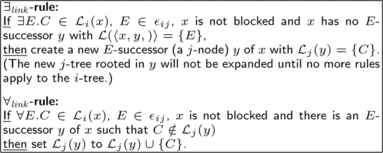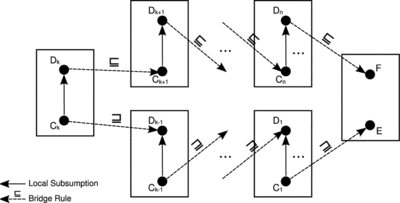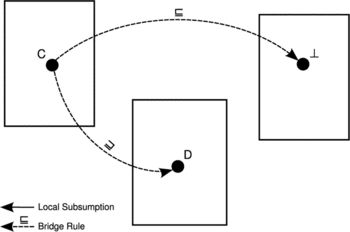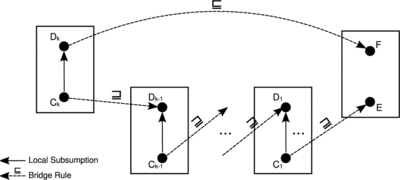Figures & data
FIGURE 1 A simple DDL knowledge base with bridge rules. In this knowledge base it always holds that MyCat is a subconcept of DangerousAnimal, even if this fact is not explicitly recorded.
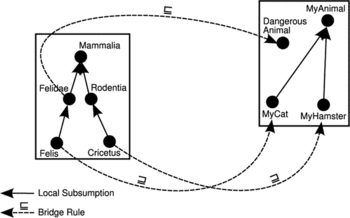
FIGURE 2 An example of complex concept mapping between three ontologies. In this case, the query whether MyCat is a subconcept of DangerousAnimal is not true under the original DDL semantics.
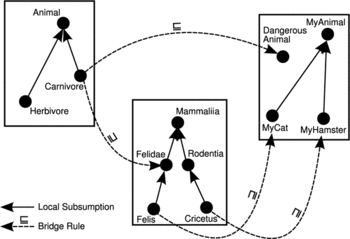
FIGURE 4 Renaming of concepts from Figure 2 employed in Example 1. The three local ontologies are referred to as 𝒯 b —behavior ontology, 𝒯 c —classification ontology, and 𝒯 y —backyard ontology.

FIGURE 8 Tableaux expansion rules for DDL over 𝒜ℒ𝒞 under the transitivity requirement. First five rules are standard 𝒜ℒ𝒞 tableaux rules. Note that the ⊔ -rule is nondeterministic. The final two rules are new and are triggered by bridge rules.
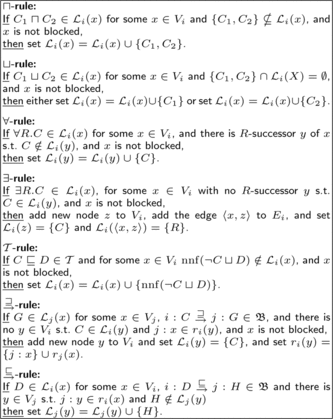
FIGURE 9 The message protocol for the newly introduced distributed tableaux algorithm. For each kind of message we specify when the message is sent from some local reasoning service T j and also what happens when the message is received in some local reasoning service T j (T j is always the local reasoning service). An auxiliary data structure S j is introduced in each T j in order to track messages that have been sent in order to assure termination.
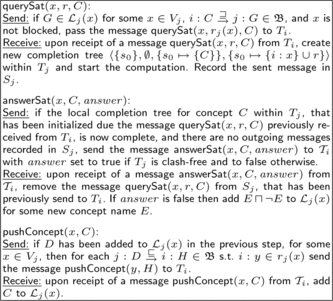
FIGURE 10 The tableaux expansion rule used in the original DDL algorithm (Serafini and Tamilin, Citation2005).

FIGURE 11 The tableaux expansion rules of the algorithm for ℰ-connections (Cuenca Grau et al., Citation2004).
